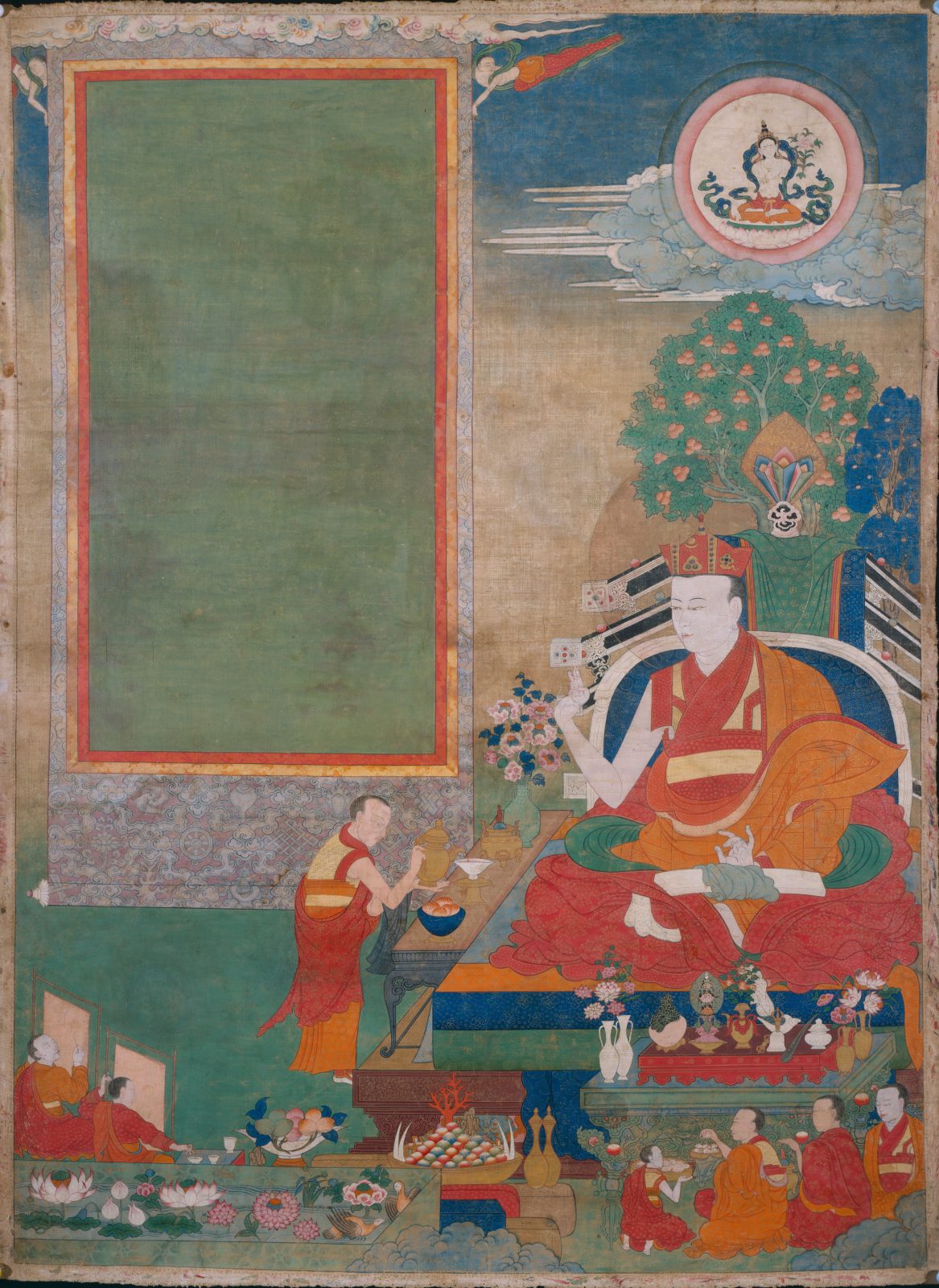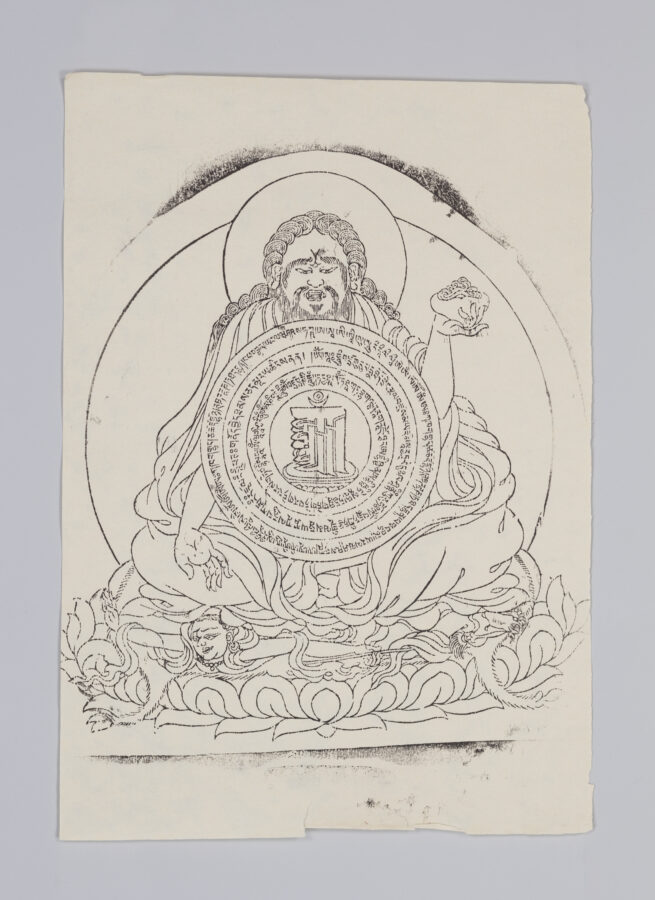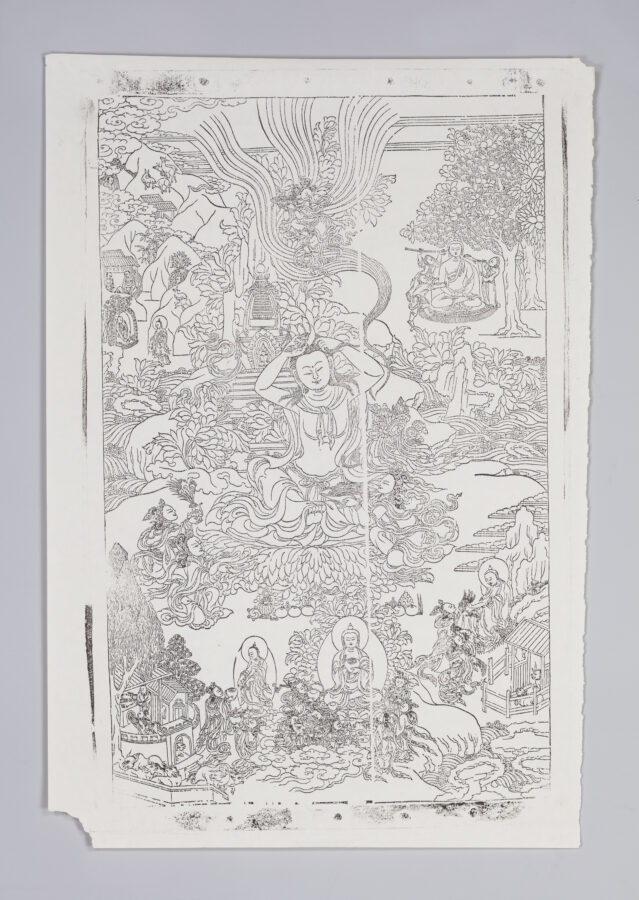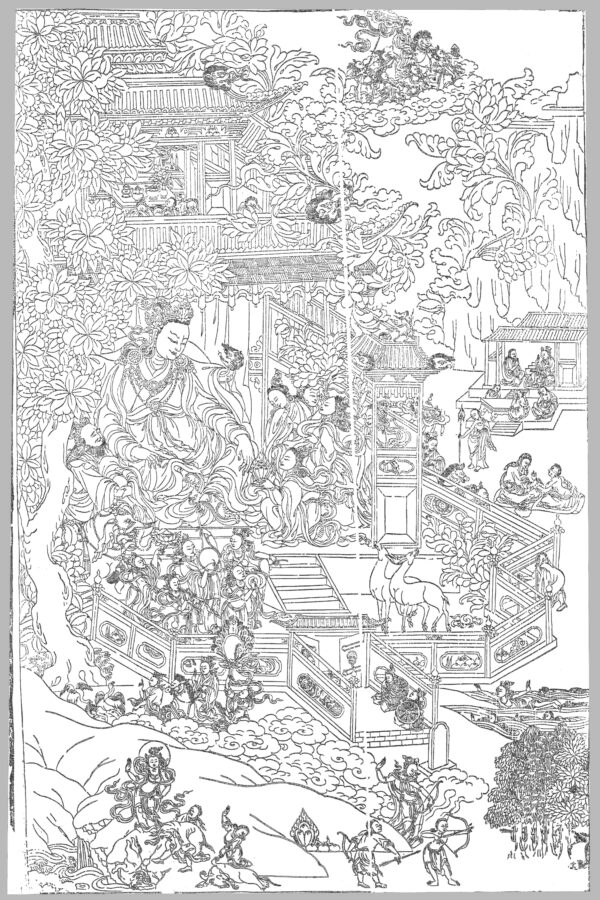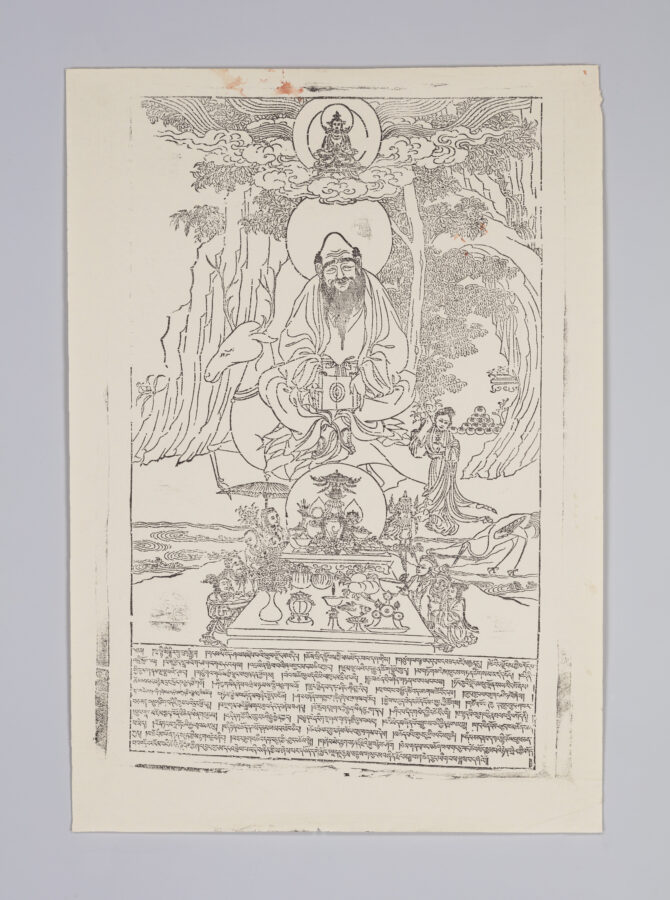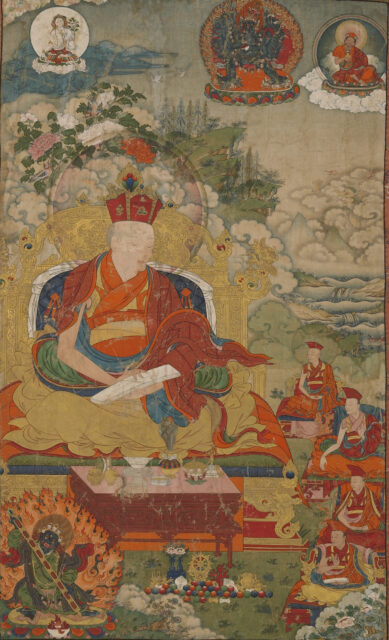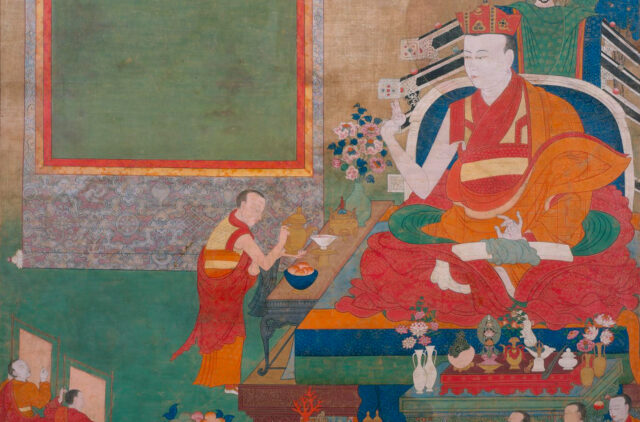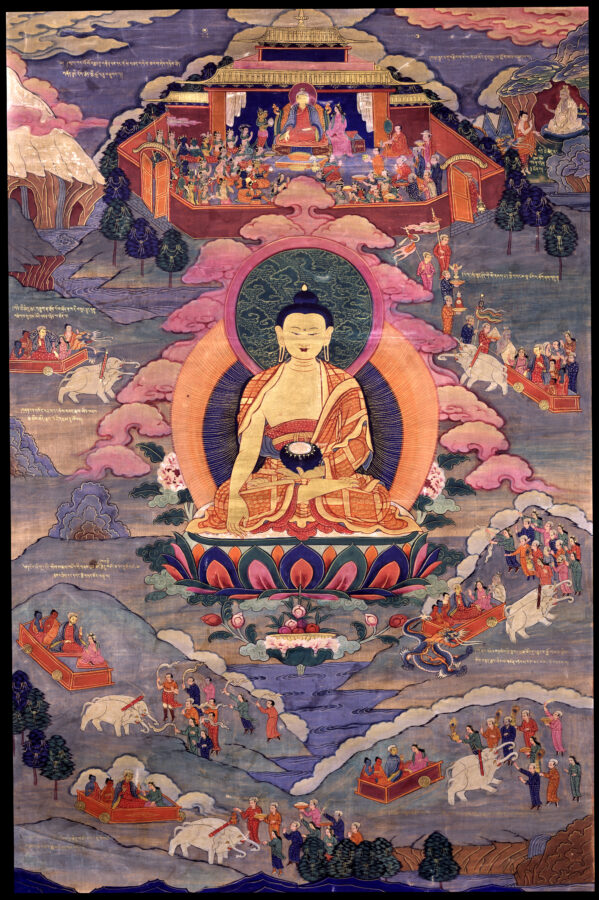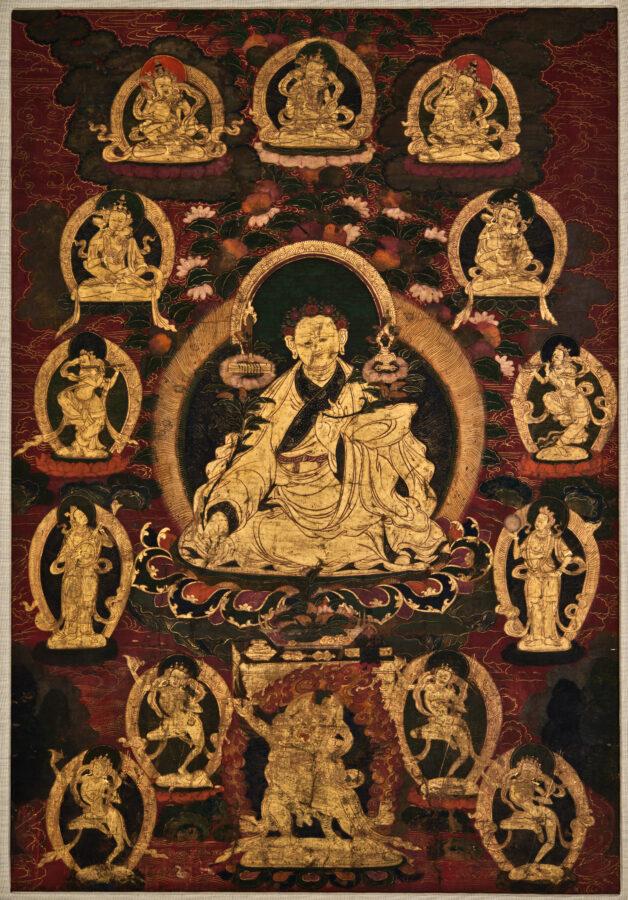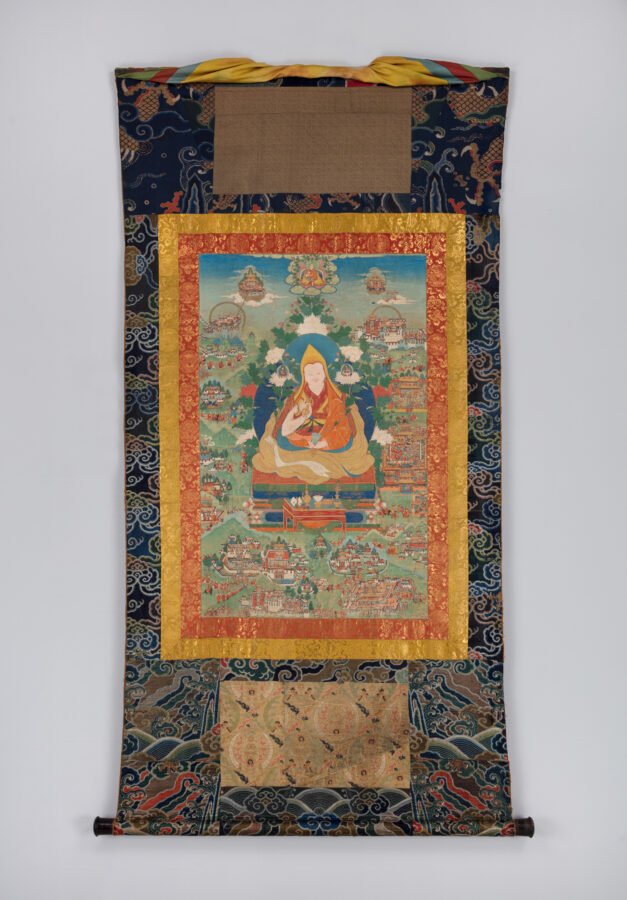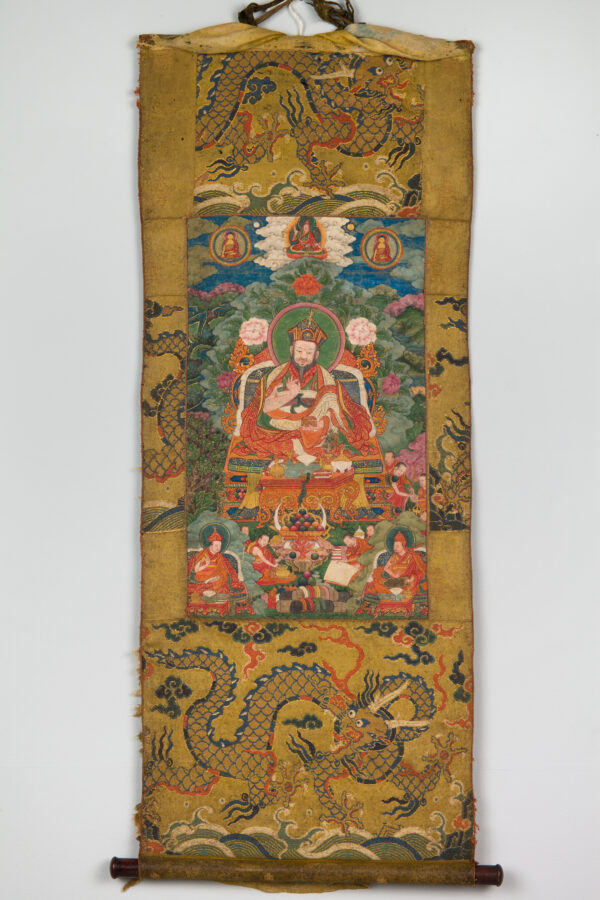The scholar and artist Situ Panchen (1700–1774) is largely credited with reviving the Encampment Style (Gardri) in his native Kham region after it was nearly eclipsed in central Tibet due to civil war. Situ’s role as a commissioner of paintings is commemorated through this portrait of him as patron.One of the most widely acclaimed painting sets designed and commissioned by Situ Panchen is Kshemendra’s One Hundred and Eight Morality Tales (avadana) in twenty-three narrative paintings. Situ Panchen began designing his own set of this cycle in 1733,soon after hearing the disastrous news of the sudden and unexpected passing away of his teachers, the Twelfth Karmapa (1703-1732) and Eighth Shamar (1695-1732) lamas. Situ set up a workshop for executing these paintings, for which he himself sketched the compositions according to his own original ideas. He personally directed the entire process of the painting, from the initial coloring to the finishing details. In order to realize his vision, Situ trained a number of master painters of Karsho (near his previous seat, Karma Monastery) to do most of the painting work. This would have been the last painting in a series, depicting Situ as patron, where he is shown instructing his team of artists in the bottom left corner of the painting.In 1736 Situ composed a long inscription, which would have appeared in this painting in the large blank scroll held up by goddesses: I have followed the Chinese masters in color, in mood expressed, and form, and I have depicted lands, dress, palaces, and so forthas [I have] actually seen in India. Even though all the discriminating skill of Menthang—[both] New and Old—and the Khyen[ri] tradition followers, Jeugangpa and the Encampment masters are present here, I have made [these paintings] different in a hundred thousand [particulars of] style.
Situ names all of the major Tibetan painting traditions (Menri, Khyenri, Jeugangpa, and Encampment) as represented in his work to suggest the all-encompassing nature of his artistic vision. His mention of things he had “actually seen in India” refers to his firsthandexperiences with the culture of the Indian subcontinent during his first pilgrimage to Nepal in 1723. Two painters sit in the bottom-left corner, brushes poised, as if awaiting Situ’s instructions.
